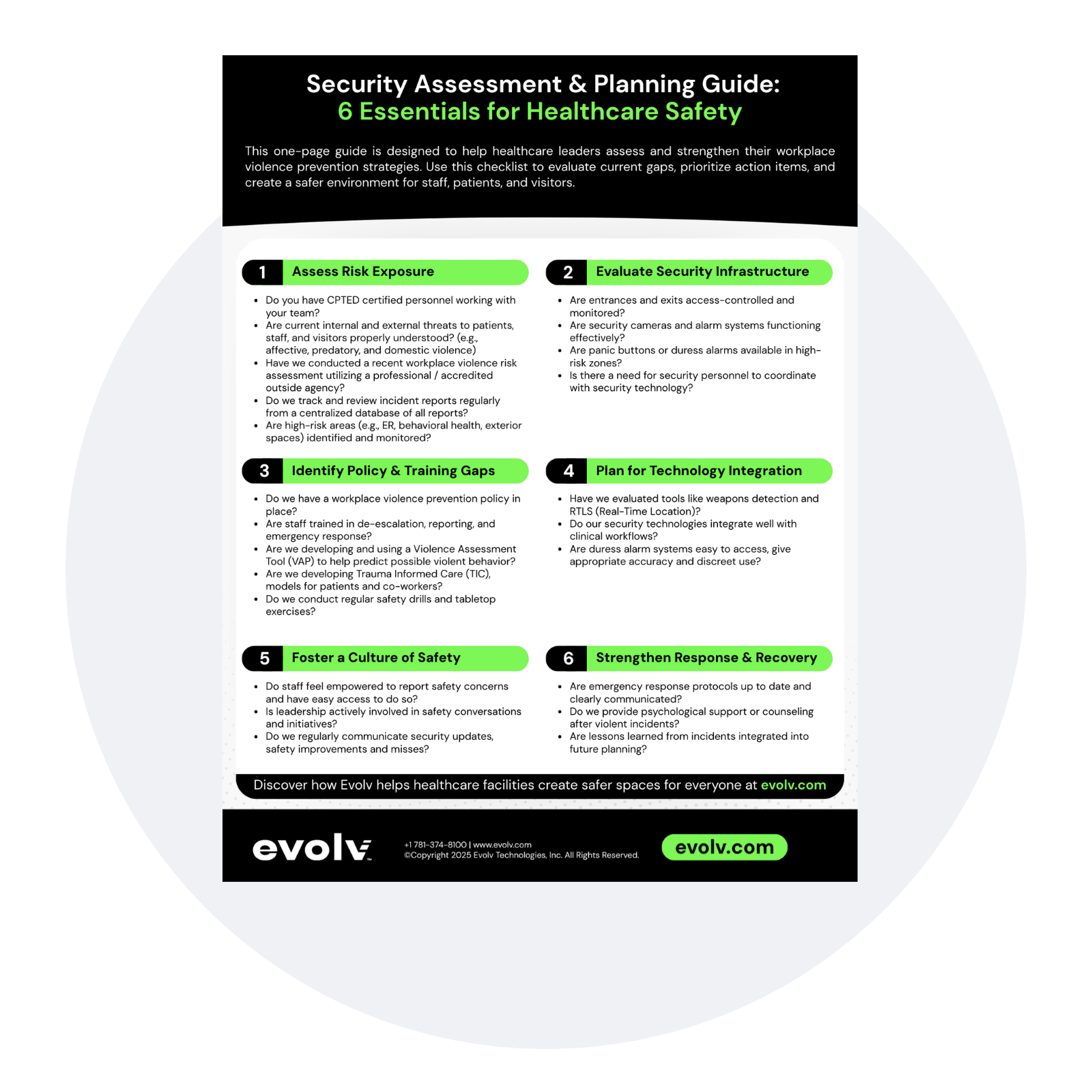Guide to Healthcare Facility Safety: 6 Critical Steps to Strengthen Security

Healthcare organizations are under increasing pressure to protect their people and facilities from workplace violence. This guide outlines six foundational areas that healthcare leaders can focus on to build a safe, resilient environment for staff, patients, and visitors.
- Understand Your Risk
Every facility faces different threats, so the first step is getting a clear, data-backed picture of your specific risks. This goes beyond stories or assumptions. A formal workplace violence risk assessment, ideally led by a third party, helps uncover where you’re most vulnerable. Emergency departments, behavioral health units, and outdoor areas often carry higher risk due to stress, unpredictability, and open access. Reviewing incident reports in a centralized system can help spot patterns. You can also work with experts in Crime Prevention Through Environmental Design (CPTED) to make your physical space part of the solution. By understanding the different forms of violence, such as impulsive, planned, or defensive, you’ll be better equipped for a range of scenarios.
- Check Your Infrastructure
Once you know the risks, take a close look at your physical systems. Are entrances secured and monitored? Do your cameras and alarms work consistently? In high-risk areas, panic buttons or duress alarms should be easy to locate and simple to use. Just as important, your security team should be connected to technology, trained to respond quickly, and aware of the areas they cover. The goal is a smooth and coordinated system where people and tools work together effectively.
- Strengthen Policies and Training
Even the best equipment won’t help if staff are unclear about how to use it or what to do in a crisis. Your violence prevention policy should meet OSHA and Joint Commission standards but also be easy to understand and apply. Training should go beyond emergency procedures. Focus on de-escalation skills, incident reporting, and recognizing warning signs. Tools like Violence Assessment Protocols can help flag risks early. Trauma-Informed Care models can also support both staff and patients in high-stress environments. Regular drills and tabletop exercises help reinforce these practices.
- Make Technology Work for You
Technology should make your job easier. Evaluate whether systems like weapons detection and real-time location tracking are integrated with your day-to-day workflows. All your systems, from duress buttons to tracking platforms, should work together to support clear and fast decision-making.
- Build a Culture of Safety
Policies and tech matter, but culture brings them to life. Staff need to feel confident and supported when raising safety concerns. That confidence often starts with leadership. When leaders take part in safety efforts, communicate regularly, and recognize progress, it creates a stronger sense of shared responsibility. Keep safety top of mind with regular briefings and open conversations about what’s working and where improvements are needed.
- Be Ready to Respond and Recover
Even with the best planning, incidents can happen. Emergency procedures should be easy to follow, well-documented, and practiced often. After an event, provide access to counseling and allow time for staff to process and recover. Just as important, take time to learn. Review what went well, what needs improvement, and how to strengthen your response. Resilient organizations don’t just recover. They come back stronger.

